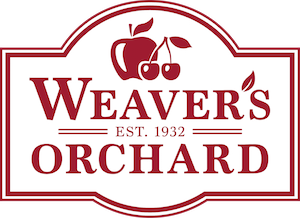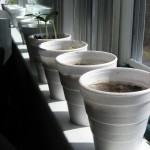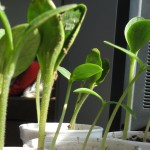After college, I lived in Chicago for five years. The winter would fitfully jolt into summer, skipping spring entirely, and sometimes on sunny April days I would stand on our apartment’s back balcony and wish for a tiny yard where I could garden.
It turns out I didn’t get just a tiny back yard. I moved back home to rural Pennsylvania, where I can not only enjoy a warmer, lusher spring, but I can also use my parents’ acreage to plant a garden.
I started in February. Early spring usually has that one day when the sunlight speaks in code to Pennsylvania gardeners, sending a message that it’s time to get out the trowels. This year I heard that message and started planning. I designated a compost pile, nestled seeds into cups, and gathered advice from friends who garden (for instance, build a metal fence, because ambitious rabbits will chew through plastic!). Duane and Karen Newcomb’s witty and hospitable classic The Postage Stamp Garden Book guided me at each planning stage, drawing me in with chapters like “Plants That Like Each Other” and giving valuable advice, like how to speed up the composting process I should have begun months ago.
Soon, seedlings peeped through the soil. While awaiting the safe dates for planting, these skinny seedlings have become a robust tangle of zucchini, cucumbers, tomatoes, broccoli, beans, peppers, cilantro, basil, thyme, and rosemary.
Photo: Sean Talbot
As I wait for the last frost so I can transfer them to the tiny square plot where they’ll flourish, I’ve been thinking about what this process has taught me already. Gardening this spring and summer will change the way I think about vegetables, herbs, and farming.
I will know what it’s like to watch a vegetable through its whole life cycle. I will know that zucchini and cucumbers pop through the soil with periscope snouts fully formed. I will have seen how plants shrug toward the sun. Right now, a zucchini plant is lifting its leaves, like mitten-clad hands, toward the window, and a cucumber plant has its leaves plastered against the glass like a kid making faces into a shop window.
I’ll know on some scale the labor involved in growing vegetables, and how much of that labor is protective. I like these plants that I’m raising, and I hope they’ll succeed. Of course I’ll build a fence for them, to keep rabbits and deer away. I’d practically sleep outside next to them and shoo the critters away myself.
And when I taste the first fruits of this protection and nurture, I will know what kind of effort and time each plant’s life took it.
So when I stop by the orchard, farmers’ market, or roadside stand to pick up butterhead lettuce or other vegetables I opted not to grow this year, maybe I’ll look at the veggies with a little more wonder, considering more than just which one is the best product to buy.


